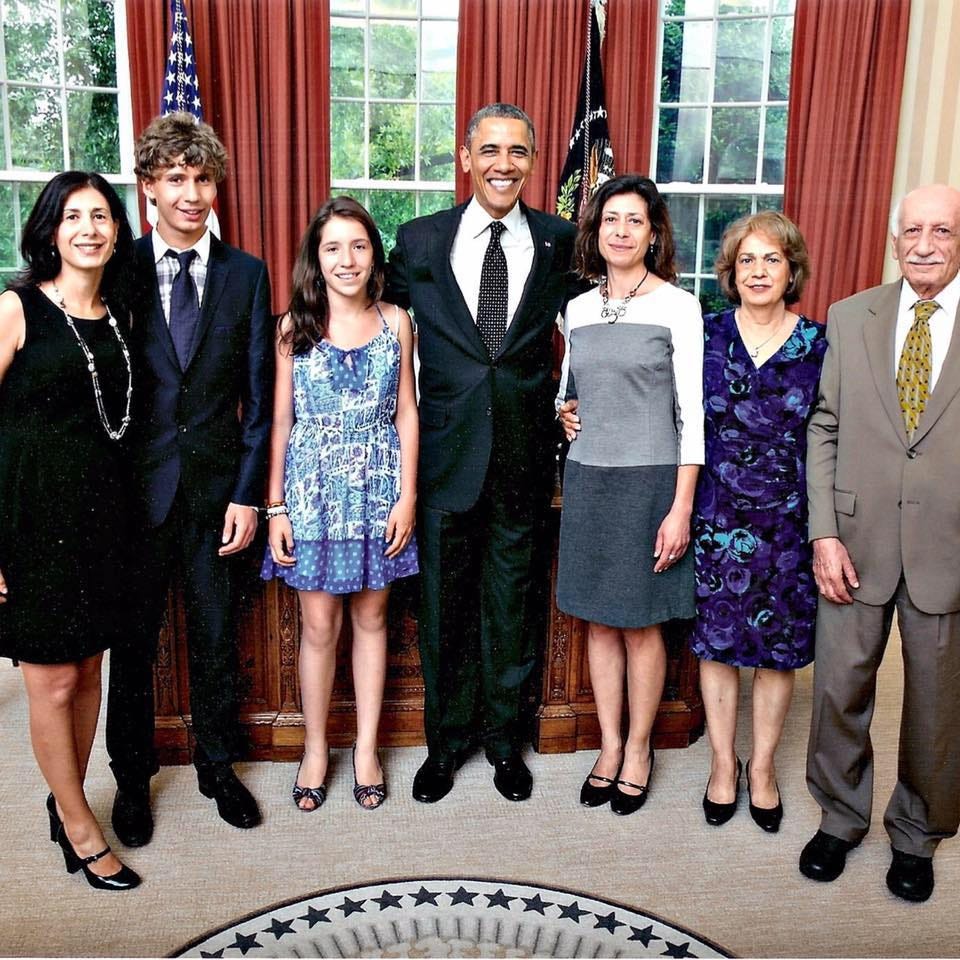Comments Delivered at my Father-In-Law's Funeral
Today we celebrated the life of Saeed Keyvanshad
How do you take the measure of a man?
The first time I met Saeed Keyvanshad, I was dating his daughter, Katie. I’m now married to her, but back then, I was just the nervous boyfriend hoping to make a good impression. I had heard rumors about him—a man larger than life. Implacable. Immovable. Intimidating.
Saeed came to campus to help Katie move out after graduation, and I, of course, volunteered to help too. As we worked, there was this moment when Saeed and I ended up sitting together in the rental truck while Katie ran back into the apartment. It was just the two of us. Alone. I had no idea what to say, so I decided to make small talk about something I knew absolutely nothing about: “What did you think of the Cubs game last night?”
Now, anyone who knew Saeed well knows how laughable this is. Of all the millions of things Saeed could talk about: religion, politics, home renovation, sports—and especially the Cubs—was not one of them.
So how do you take the measure of a man? It’s not in his ability to discuss local sports teams, that’s for sure.
Maybe it’s in a name. Let’s talk about Saeed’s name: Saeed Keyvanshad. That name is unique—because Saeed is the first person ever to have it. He petitioned to have his last name changed, and the Iranian government would not allow him Keyvan because it was already taken. So he combined two perfectly good names that had never been combined before, “Keyvan” and “Shad,” into one.
Funny enough, that name reflects who Saeed was. He was two very different things at once.
Keyvan, when translated from Farsi, means Saturn or star. But, in more poetic terms, it refers to a sort of celestial grandiosity, a steadfastness, a force larger larger than life.
That was Saeed.
How else do you explain a young man who survived a tunnel collapse while working construction as a foreman, shattering his leg, yet he still got up and walked away?
How else do you explain a middle-aged man who fled his country when his name was placed on a list, just days before it was too late, escaping with his life? A man who in the United States ran a shoe store, was held up at gunpoint twice, handcuffed, and yet still walked away?
That was Saeed Keyvanshad—Implacable. Immovable. Fierce. Larger than life.
But then there was also the other part of his name. The Shad, which when translated from Farsi into English means happy, joy, or cheerfulness. People often say Saeed softened as he got older, especially with his grandchildren. But I’ve heard stories about Saeed’s mischievous side even as a young man. In Farsi, he was what you’d call “Sheytoon”—playful, full of humor, always pulling pranks. Mischievous. Clever. There was an incident with a horse and the horse’s rear end…but we won’t get into that.
As a father and grandfather, this joy shone brightly. He became sillier, funnier, always quick to laugh at other’s and more importantly himself. He loved to challenge his grandchildren with puzzles and quizzes, to teach them, to make them laugh and grow. He was a man who found joy in joy itself.
So how do you measure a man? It’s not in wealth, though Saeed built a successful life. It’s not in achievements, though he had plenty of those too.
The measure of a man is in what he leaves behind, especially in the lives of those who loved him. Anyone who knows the Keyvanshad family can see Saeed’s legacy in his children and grandchildren. They carry the Keyvan: his strength, his stubborn resolve—the larger-than-life attitude. And also, the Shad: his laughter, his love, and his playful spirit.
It is the joy that will be his legacy, and the parts of him that live on in those he touched. Saeed Keyvanshad has left this world, but he leaves it richer, fuller, and carrying his indelible mark which will long outlive his body. He will be deeply missed. May he rest in peace.





